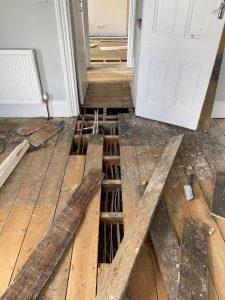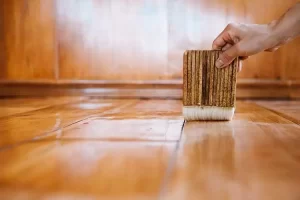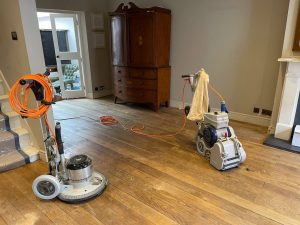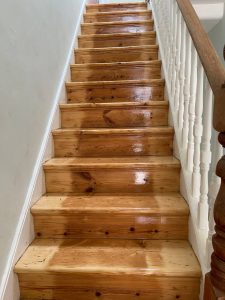The Best Floor Sanding Techniques for High-Traffic Areas

Maintaining the beauty and durability of your floors in high-traffic areas is crucial, especially in bustling cities like London. Proper floor sanding techniques can make a significant difference in extending the life of your flooring. In this guide, we’ll explore the best floor sanding techniques suited for high-traffic areas, ensuring your floors remain pristine and resilient.
Understanding High-Traffic Areas
High-traffic areas are parts of your home or business that experience a lot of footfall. Examples include hallways, entryways, kitchens, and commercial spaces. These areas are more susceptible to wear and tear, making regular maintenance essential.
Preparing for Floor Sanding

Before beginning the sanding process, it’s important to prepare the area properly:
- Clear the space: Remove all furniture, rugs, and other objects.
- Inspect the floor: Check for nails, staples, or other protrusions that could damage sanding equipment.
- Clean thoroughly: Sweep and vacuum the floor to remove dust and debris.
Choosing the Right Sandpaper Grit
The choice of sandpaper grit is crucial for achieving the desired finish. Here’s a quick guide:
- Coarse (24-36 grit): Ideal for removing old finish and smoothing rough surfaces.
- Medium (60-80 grit): Suitable for evening out the floor and preparing it for finer sanding.
- Fine (100-150 grit): Used for the final pass to create a smooth, polished surface.
Sanding Techniques for High-Traffic Areas
When sanding high-traffic areas, follow these techniques for the best results:
1. Use a Drum Sander
Drum sanders are powerful and efficient for large areas. Ensure you keep the sander moving to avoid gouging the floor. Start with a coarse grit and gradually move to finer grits.
2. Edge Sanding
High-traffic areas often include edges and corners. Use an edge sander to reach these spots, ensuring a uniform finish throughout the space.
3. Sanding in the Direction of the Grain
Always sand in the direction of the wood grain to avoid scratches and achieve a smoother finish. This is especially important in visible high-traffic areas.
4. Dust Management
High-traffic areas require efficient dust management to prevent residue from settling on the freshly sanded surface. Use a vacuum attachment on your sander and clean the area regularly.
Finishing Touches
After sanding, apply a high-quality finish to protect the wood and enhance its appearance. Polyurethane is a popular choice for high-traffic areas due to its durability and ease of maintenance. Ensure proper ventilation during application and allow adequate drying time.
Maintaining Sanded Floors

Regular maintenance is key to preserving the look and longevity of your sanded floors. Here are some tips:
- Regular Cleaning: Sweep and vacuum frequently to remove dirt and debris.
- Use Rugs and Mats: Place rugs in entryways and high-traffic zones to reduce wear.
- Protective Pads: Use felt pads under furniture legs to prevent scratches.
Conclusion
Proper floor sanding techniques can significantly enhance the durability and appearance of high-traffic areas. By following these tips, you can ensure your floors withstand the demands of daily use while maintaining their beauty. For professional floor sanding services in London, consider reaching out to experienced local experts who can provide tailored solutions for your needs.






The Best Finishing Techniques for Sanded Hardwood Floors
The Best Finishing Techniques for Sanded Hardwood Floors Hardwood floors are a timeless feature[Read more...]
Wood floor polishing
[Read more...]
The Benefits of Hiring a Local Floor Sanding Expert
The Benefits of Hiring a Local Floor Sanding Expert Enhancing Your London Home with[Read more...]
Floor Sanding for Open-Plan Spaces: Tips and Tricks
Floor Sanding for Open-Plan Spaces: Tips and Tricks Achieve a Seamless and Beautiful Finish[Read more...]
How to Sand Floors in Small Spaces: Tips and Tricks
How to Sand Floors in Small Spaces: Tips and Tricks Sanding floors in[Read more...]
Case Studies: Successful Floor Sanding Projects in London
Floor sanding is an essential process for restoring and enhancing the beauty of wooden floors.[Read more...]
The Best Practices for Sanding Oak Floors
The Best Practices for Sanding Oak Floors Expert Tips and Techniques for Achieving a[Read more...]
Floor Sanding for Commercial Properties: What You Need to Know
Floor sanding is not only essential for residential spaces but also plays a crucial role[Read more...]
Wood Floor Maintenance
[Read more...]
Repairs
[Read more...]